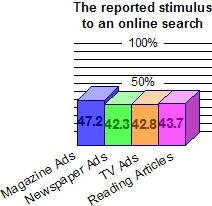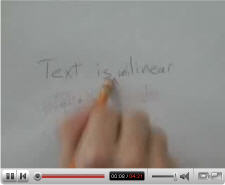If you thought pay-per-click (PPC) search engine marketing would make your marketing planning easier, think again.
PPC is simple and brilliant: Show online ads to someone who is searching based on the keywords they choose as a proxy for their buying intentions. It’s a proven way to catch qualified prospects when they’re considering a purchase. Within limits, it’s also quite measurable.
So life got easier, right? Certainly you can now eliminate much of your traditional advertising and pile on the keyword buys. There’s your plan. Now you can go home.Â
If that’s what you’re thinking, you may want to think again.Â
Specifically, consider what sends prospects to their computers in the first place. A survey by the Retail Advertising and Marketing Association (RAMA) reports that consumers start their web searches based on many off-line stimuli, including much of traditional advertising.
Consumers said that they were most motivated to begin an online search after viewing advertisements in magazines (47.2%), newspapers (42.3%), on TV (42.8%) and from reading articles (43.7%).
Although it wasn’t specifically addressed here, you can gather that in these cases off-line advertising probably triggered a search for a brand (the advertised brand, that is), as opposed to a generic search (one on the category of product). In this way, the off-line stimulus greatly improved the odds of your PPC ads finding prospects who are ready to buy.
 Put another way, the stimulus improved the PPC ads’ conversion rates. If you were to read the PPC stats in a vacuum, you’d confer more power to the medium than it deserves.
Put another way, the stimulus improved the PPC ads’ conversion rates. If you were to read the PPC stats in a vacuum, you’d confer more power to the medium than it deserves.
Imagine two men in a fishing boat, one doing all of the casting of the line and reeling in of the fish, and the other man standing ready with the fishing net. It would be unfair to claim that the guy with the net was actually doing any fishing, just because he brought all of the catches into the boat.
So which of the off-line media reels them close to the boat most effectively?
I show the chart above not to demonstrate the superiority of one medium over another. On the contrary, I’m struck by how close they are in terms of “most motivating” a search. It instead shows what an incredibly mixed bag these media present the beleaguered marketing planner, and how technology, at least in this case, isn’t cutting that person any breaks.
